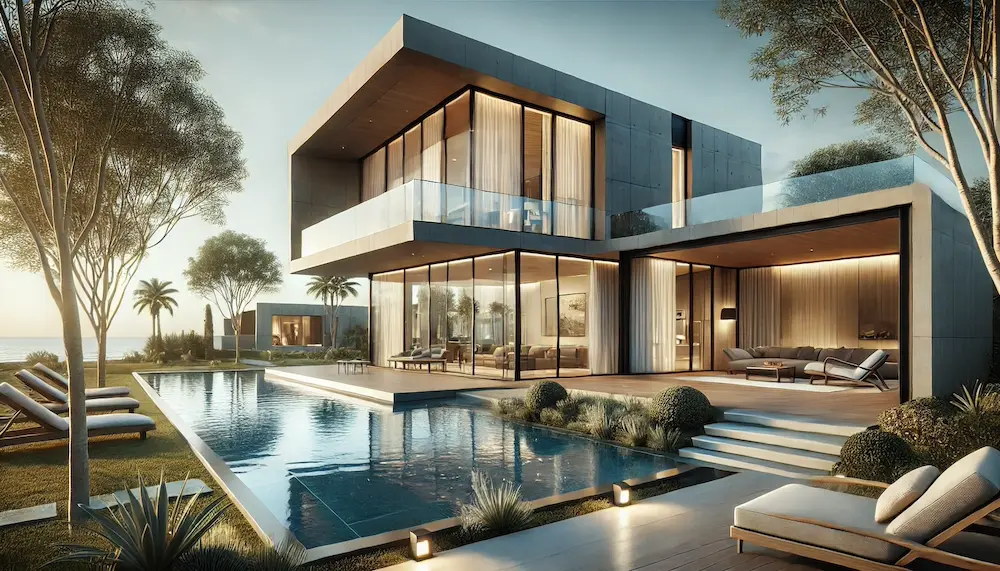Modern villas epitomize contemporary luxury, seamlessly blending innovative design with functionality. This article delves into the essence of modern villas, tracing their historical roots, highlighting key architectural features, exploring their diverse applications, and offering considerations for those contemplating such a residence.
Introduction to Modern Villas
A modern villa represents a harmonious fusion of cutting-edge architectural design and opulent living. Characterized by minimalist aesthetics, open floor plans, and a strong connection to the surrounding environment, modern villas prioritize comfort, sustainability, and technological integration.
History and Origins of Modern Villas
The concept of the villa dates back to ancient Rome, where it denoted a luxurious country house for the elite. This idea evolved over centuries, with significant transformations during the Renaissance and the Industrial Revolution. The 20th century marked a pivotal shift as architects like Le Corbusier introduced modernist principles, emphasizing functionality, simplicity, and the use of new materials. His designs, such as Villa Savoye, epitomize the transition from classical to modern architecture, laying the foundation for today’s modern villas.
Key Features of Modern Villas
Modern villas are distinguished by several defining characteristics:
- Open-Concept Living Spaces: Embracing fluidity, these spaces eliminate unnecessary walls, fostering a sense of freedom and facilitating natural light flow.
- Integration with Nature: Large glass windows and seamless indoor-outdoor transitions connect residents with the natural environment, enhancing tranquility and aesthetic appeal.
- Sustainable Design: Incorporating eco-friendly materials, energy-efficient systems, and green technologies reflects a commitment to environmental responsibility.
- Minimalist Aesthetics: Clean lines, uncluttered spaces, and a focus on functionality over ornamentation define the minimalist approach.
- Technological Integration: Smart home systems enhance convenience, security, and energy management, aligning with contemporary lifestyles.
Applications of Modern Villas
Modern villas serve various purposes, including:
- Private Residences: Offering personalized luxury and comfort tailored to individual preferences.
- Vacation Homes: Providing serene retreats that combine modern amenities with picturesque locales.
- Boutique Hospitality: Serving as exclusive accommodations that offer guests a blend of privacy and high-end design.
Considerations When Choosing a Modern Villa
When selecting or designing a modern villa, consider the following:
- Location: The setting should complement the villa’s design and meet lifestyle needs, whether in urban, coastal, or rural environments.
- Architectural Style: Ensure the design aligns with personal aesthetics and functional requirements.
- Sustainability: Evaluate the incorporation of eco-friendly features and energy-efficient technologies.
- Budget: Consider construction, maintenance, and potential customization costs.
- Legal Regulations: Be aware of local building codes, zoning laws, and environmental regulations that may impact design and construction.
Conclusion
Modern villas encapsulate the evolution of architectural design, merging historical influences with contemporary innovations. They offer luxurious, functional, and sustainable living spaces that cater to diverse applications. By understanding their key features and considerations, one can make informed decisions when embarking on the journey to own or design a modern villa.
